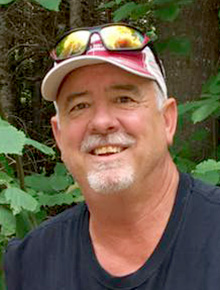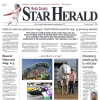
This is the time of year when every pheasant hunter in the state awaits the release of Minnesota DNR’s roadside count.
I have been lucky enough to be able to do the roadside counts in my southwest Minnesota county. I have been driving the same three routes during the first 15 days of August for about the past 10 years.
These are the same 25-mile-long routes that are repeated since the roadside counts started almost 60 years ago. Prospective pheasant hunters use these density maps to determine where they might travel for their hunting trips.
I have some differing views from almost all of the other hunters that use these maps. What they attempt to do is map out the varying pheasant population numbers across the primary pheasant range in Minnesota.
These populations can vary greatly depending on how severe the winter in that part of the state was and how much rain they got during the peak of the hatch in mid-June.
Heavy rains can decimate young pheasant chicks, especially if these rain events had large total accumulations or there was any hail that accompanied them.
It is so sad that some on-the-fence hunters will actually use the pheasant roadside count data in deciding whether to even buy a license that year. If I shoot lots of birds or only a few, I would always buy a license and take my dogs for long walks in the tall grass. If you go hunting and don’t get one, I call those wildlife or nature walks and they are pretty cool by themselves.
There is no doubt that pheasant populations in Minnesota are far below both their 10-year and long-term averages. This is completely evident by the number of pheasant licenses sold each year.
It was about the year 2000 that Minnesota sold over 100,000 pheasant stamps. This is a stamp you attach to your license in order to hunt pheasants. Last year I think at the end of the pandemic those numbers were about 70,000.
I hear people complain that there are too many people hunting on the limited public lands that exist in the farmland zone. Less than 2 percent of the land base in the 12 counties of southwest Minnesota are in permanent grassland cover.
I counter that with the fact that they are adding about 5,000 acres of new habitat per year across the state and there are still fewer hunters than in 2000. Hunting pressure is far less now than it was 20 years ago.
When pheasant numbers look bad, hunters are less motivated. Pheasant numbers in South Dakota are so bad that they stopped doing their population counts. As the counts continued to decline, the hunter numbers (licenses purchased) sank like the Edmund Fitzgerald in deep Lake Superior water.
When it comes to a pheasant density map, I think they are a useful tool, but only one of the tools hunters should use. Let’s take this year, for example. I drove three 25-mile routes and saw very few pheasants. This will make my county look like a pheasant desert on the pheasant density map.
On a different morning six days later, I drove only five miles and saw over 25 birds. Four hens with four different broods of young. This is a great sign of things to come.
If I were traveling from a distance, I would go to the spots on the map that show very few pheasants. In actuality, there may be fewer pheasants in those locations, but that will equate to a much smaller percentage of hunters that will travel to that spot as well.
If the pheasant pie is smaller but you to have share that pie with fewer hunters, it results in more birds per hunter than in areas with higher populations.
Hunting is not all about killing something, but I do agree that if I go fishing, it is more fun when I catch some than when I get skunked.
Harvest is part of the experience, but a limit of birds does not mean fabulous, just as no birds does not mean failure.
Average it out, and in the end hunting outdoors is still a great place to be. … walking in the tall grass, enjoying the sights and sounds of nature and experiencing the rush of a flushing bird, even if it’s a hen which you cannot shoot.
Buy a license and find a friend or a neighbor kid and get your exercise this fall. Freezer stocked or not, you will be better off for the effort expended.
Scott Rall, Worthington, is a habitat conservationist, avid hunting and fishing enthusiast and is president of Nobles County Pheasants Forever. He can be reached at scottarall@gmail.com. or on Twitter @habitat champion.



